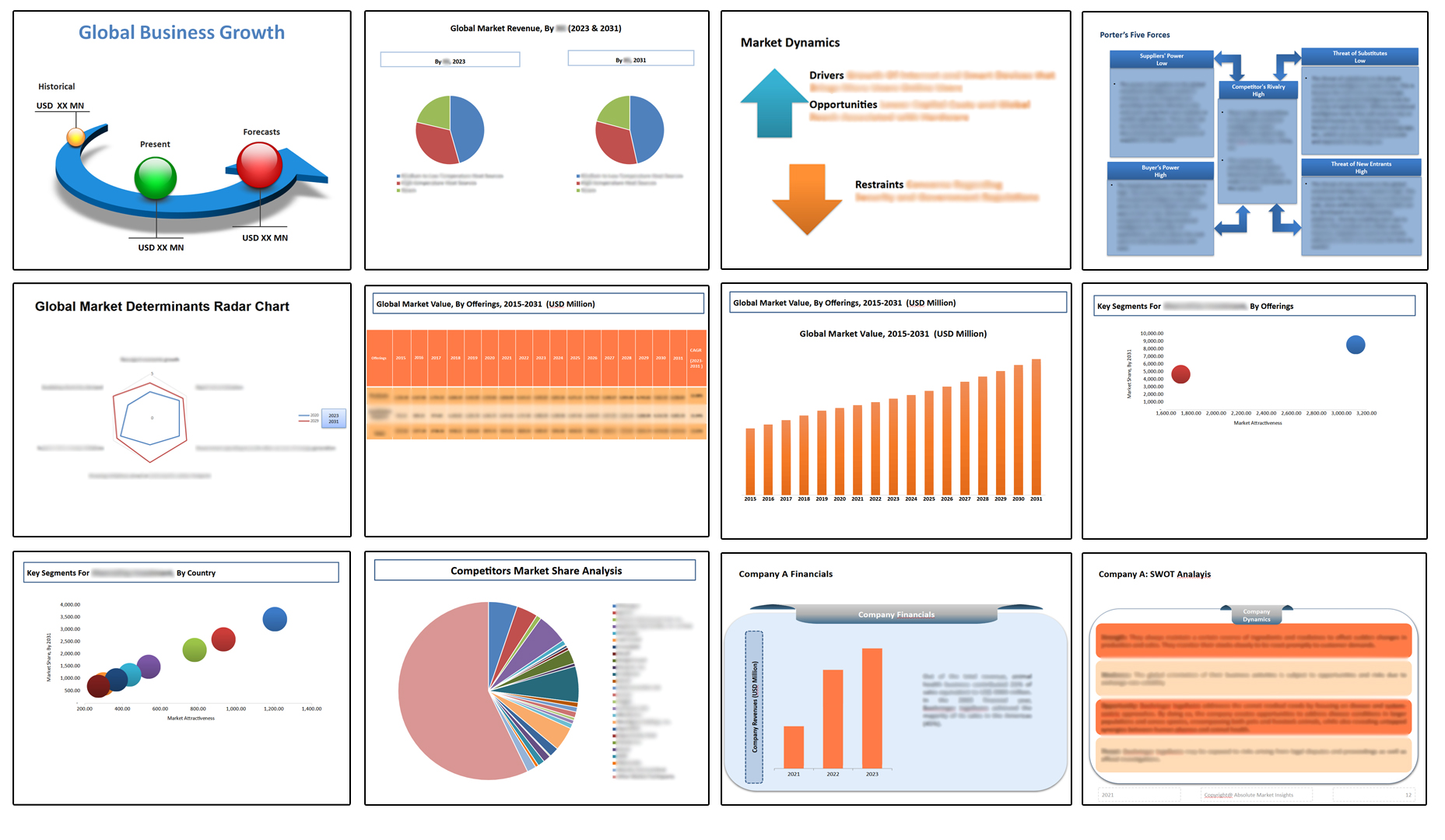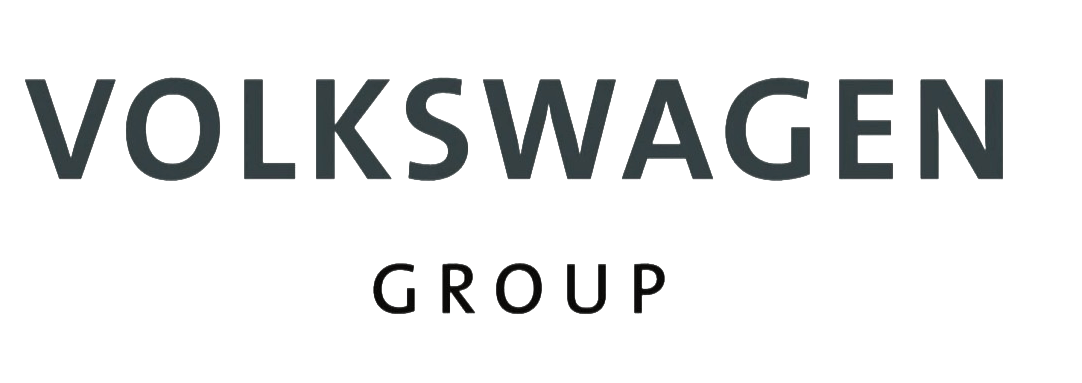Global Electric Vehicle Battery Market Insights, Growth, Share, Size: By Battery Type, By Vehicle Type, By Battery Capacity, By Propulsion Type, By Region & Segmental Forecast, 2023-2031, Comparative Analysis and Trends
- Industry: Automotive & Transportation
- Report ID: TNR-110-958
- Number of Pages: 420
- Table/Charts : Yes
- November, 2023
- Base Year : 2024
- No. of Companies : 15+
- No. of Countries : 29
- Views : 10168
- Covid Impact Covered: Yes
- War Impact Covered: Yes
- Formats : PDF, Excel, PPT
Global Electric Vehicle Battery Market to reach USD 144.5 Bn by 2031, with an Estimated CAGR of 20.2 %, states TNR
Over the last several years, electric vehicles have emerged as a critical element in implementing environmental legislation all over the world. To achieve these requirements, vehicle manufacturers have realised that their future products will be developed outside of the environment of traditional internal combustion engines (ICE). The battery is the most important and expensive component in electric vehicles, and the race is raging among OEMs and battery producers all over the world to establish their position in the electric vehicle battery market.
In 2021, electric vehicles accounted for approximately 10% of global vehicle sales, four times their market share in 2019. In comparison to 2020, public and private funding on EVs has more than quadrupled. Numerous governments have promised to phase out ICEs or have aggressive electrification goals. In 2021, there will be five times as many EV models available as in 2015, and most major automakers have announced intentions to further speed electrification of their fleets. These factors will thus support the growth of the overall global electric vehicle battery market in the upcoming years.
Global Electric Vehicle Battery Market Revenue & Forecast, (US$ Million), 2015 – 2031

Global Electric Vehicle Battery Market Future
It is estimated that, more than 27 million electric vehicles are predicted to be on the road by 2030, with EV purchases accounting for 20% to 30% of total vehicle sales. The world’s leading automakers intend to spend roughly USD 1.2 trillion through 2030 to design and manufacture millions of electric vehicles, as well as the batteries and raw materials required to support that manufacturing. Besides beyond passenger cars, the electrification of commercial vehicles such as buses, trucks, and delivery vans is gaining traction. This will create new opportunities for the electric vehicle battery market. The future of the electric vehicle battery market appears promising, with continued technological innovation, decreasing costs, and growing consumer and regulatory support.
In the electric vehicle industry, lithium-ion batteries have gained greater traction than previous types and thus had the highest share in the market in 2022. Owing to the fact that these batteries can store massive quantities of energy in a relatively tiny container. More novel battery technologies have been invented and investigated in recent years to replace lithium batteries in terms of sustainability, efficiency, and affordability.

The development of solid-state batteries is one of the most promising advances in EV battery technology. These batteries employ solid electrolytes rather than liquid or gel-based electrolytes, making them safer, more efficient, and longer lasting. Solid-state batteries also have a higher energy density than traditional batteries, which means they can store more energy in the same amount of space. Toyota and BMW are investing extensively in solid-state battery technology, and a few firms, such as QuantumScape and Solid Power, are already making strides in the electric vehicle battery market.

As the use of electric vehicles (EVs) grows, the market for electric vehicle batteries provides a huge opportunity for European businesses to enter into the market. It is expected that by 2040, over 70% of all vehicles sold in Europe across all sectors (passenger cars, vans, lorries, and buses) will be electric, due to fast increasing EV economics and a regulatory push across different European nations. Because of the rapid growth in EV numbers, the potential for electric vehicle battery market is enormous. Furthermore it estimated that by 2040, battery consumption from European-made EVs would equal 1,200 gigatonne-hours per year. Thus all the above factors are contributing to the growth of the electric vehicle battery market.
Competitive Landscape
The global electric vehicle battery market’s competitive landscape is very dynamic and continually changing owing to technology developments, alliances, regulatory changes, and market trends. New entrants and innovative technology are all contributing to the overall market’s growth. The global electric vehicle battery market report includes detailed research on the top competitors in this market, as well as information on their competition. The study also recognizes and analyses key business tactics used by these leading market actors, such as mergers and acquisitions (M&A), affiliations, partnerships, and contracts. A few of the key players operating in the global electric vehicle battery market are:
- BYD Motors Inc
- Contemporary Amperex Technology Co., Limited.
- East Penn Manufacturing Company
- ENERSYS
- FURUKAWA ELECTRIC CO., LTD.
- GS Yuasa International Ltd
- Hitachi Astemo Americas, Inc.
- Johnson Matthey Battery Systems
- leoch International Technology Limited Inc
- LG Energy Solution.
- Narada
- Panasonic Corporation
- SAMSUNG SDI CO.,LTD
- Tesla
- TOSHIBA CORPORATION
- Wanxiang Group Corporation
- Other market participants
Global Electric Vehicle Battery Market Report Coverage
| Report Specifications | Details |
| Market Revenue in 2022 | US$ 53.3 Billion |
| Market Size Forecast by 2031 | US$ 144.5 Billion |
| Growth Rate (CAGR) | 20.2% |
| Historic Data | 2015 – 2021 |
| Base Year for Estimation | 2022 |
| Forecast Period | 2023 – 2031 |
| Report Inclusions | Market Size & Estimates, Market Dynamics, Competitive Scenario, Trends, Growth Factors, Market Determinants, Key Investment Segmentation, Product/Service/Solutions Benchmarking |
| Segments Covered | By Battery Type, By Vehicle Type, By Battery Capacity, By Propulsion Type |
| Regions Covered | North America, Europe, Asia Pacific, Middle East & Africa, Latin America |
| Countries Covered | U.S., Canada, Mexico, Rest of North America, France, The UK, Spain, Germany, Italy, Nordic Countries (Denmark, Finland, Iceland, Sweden, Norway), Benelux Union (Belgium, The Netherlands, Luxembourg), Rest of Europe, China, Japan, India, New Zealand, Australia, South Korea, Southeast Asia (Indonesia, Thailand, Malaysia, Singapore, Rest of Southeast Asia), Rest of Asia Pacific, Saudi Arabia, UAE, Egypt, Kuwait, South Africa, Rest of Middle East & Africa, Brazil, Argentina, Rest of Latin America |
| Key Players | BYD Motors Inc, Contemporary Amperex Technology Co., Limited., East Penn Manufacturing Company, ENERSYS, FURUKAWA ELECTRIC CO., LTD., GS Yuasa International Ltd, Hitachi Astemo Americas, Inc., Johnson Matthey Battery Systems, leoch International Technology Limited Inc, LG Energy Solution., Narada, Panasonic Corporation, SAMSUNG SDI CO.,LTD, Tesla, TOSHIBA CORPORATION, Wanxiang Group Corporation, Other Industry Participants |
| Customization Scope | Customization allows for the inclusion/modification of content pertaining to geographical regions, countries, and specific market segments. |
| Pricing & Procurement Options | Explore purchase options tailored to your specific research requirements |
| Contact Details | Consult With Our Expert
Japan (Toll-Free): – +81 663-386-8111 South Korea (Toll-Free): – +82-808- 703-126 Saudi Arabia (Toll-Free): – +966 800 850 1643 United States: +1 302-232-5106 United Kingdom: +447537105080 E-mail: askanexpert@thenicheresearch.com
|
Global Electric Vehicle Battery Market
By Battery Type
- Lithium-Ion
- Solid-State Batteries
- Lead Acid
- Nickel Metal Hydride
- Lithium-Sulfur Batteries
- Others
By Vehicle Type
- Passenger Cars
- Light Commercial Vehicle
- Heavy Commercial Vehicle
- Others
By Battery Capacity
- Less than 20kWh
- 21 to 41kWh
- More than 41kWh
By Propulsion Type
- Battery Electric Vehicle (BEV)
- Plug-in Hybrid Electric Vehicle (PHEV)
- Hybrid Electric Vehicle (HEV)
By Region
- North America (U.S., Canada, Mexico, Rest of North America)
- Europe (France, The UK, Spain, Germany, Italy, Nordic Countries (Denmark, Finland, Iceland, Sweden, Norway), Benelux Union (Belgium, The Netherlands, Luxembourg), Rest of Europe)
- Asia Pacific (China, Japan, India, New Zealand, Australia, South Korea, Southeast Asia (Indonesia, Thailand, Malaysia, Singapore, Rest of Southeast Asia), Rest of Asia Pacific)
- Middle East & Africa (Saudi Arabia, UAE, Egypt, Kuwait, South Africa, Rest of Middle East & Africa)
- Latin America (Brazil, Argentina, Rest of Latin America)
Report Coverage and Deliverables:

Table of Contents
Note: This ToC is tentative and can be changed according to the research study conducted during the course of report completion.
**Exclusive for Multi-User and Enterprise User.
Global Electric Vehicle Battery Market Segmentation
By Battery Type
By Vehicle Type
By Battery Capacity
By Propulsion Type
By Region
**Note: The report covers cross-segmentation analysis by region further into countries
The Niche Research approach encompasses both primary and secondary research methods to provide comprehensive insights. While primary research is the cornerstone of our studies, we also incorporate secondary research sources such as company annual reports, premium industry databases, press releases, industry journals, and white papers.
Within our primary research, we actively engage with various industry stakeholders, conducting paid interviews and surveys. Our meticulous analysis extends to every market participant in major countries, allowing us to thoroughly examine their portfolios, calculate market shares, and segment revenues.
Our data collection primarily focuses on individual countries within our research scope, enabling us to estimate regional market sizes. Typically, we employ a bottom-up approach, meticulously tracking trends in different countries. We analyze growth drivers, constraints, technological innovations, and opportunities for each country, ultimately arriving at regional figures.Our process begins by examining the growth prospects of each country. Building upon these insights, we project growth and trends for the entire region. Finally, we utilize our proprietary model to refine estimations and forecasts.
Our data validation standards are integral to ensuring the reliability and accuracy of our research findings. Here’s a breakdown of our data validation processes and the stakeholders we engage with during our primary research:
- Supply Side Analysis: We initiate a supply side analysis by directly contacting market participants, through telephonic interviews and questionnaires containing both open-ended and close-ended questions. We gather information on their portfolios, segment revenues, developments, and growth strategies.
- Demand Side Analysis: To gain insights into adoption trends and consumer preferences, we reach out to target customers and users (non-vendors). This information forms a vital part of the qualitative analysis section of our reports, covering market dynamics, adoption trends, consumer behavior, spending patterns, and other related aspects.
- Consultant Insights: We tap into the expertise of our partner consultants from around the world to obtain their unique viewpoints and perspectives. Their insights contribute to a well-rounded understanding of the markets under investigation.
- In-House Validation: To ensure data accuracy and reliability, we conduct cross-validation of data points and information through our in-house team of consultants and utilize advanced data modeling tools for thorough verification.
The forecasts we provide are based on a comprehensive assessment of various factors, including:
- Market Trends and Past Performance (Last Five Years): We accurately analyze market trends and performance data from preceding five years to identify historical patterns and understand the market’s evolution.
- Historical Performance and Growth of Market Participants: We assess the historical performance and growth trajectories of key market participants. This analysis provides insights into the competitive landscape and individual company strategies.
- Market Determinants Impact Analysis (Next Eight Years): We conduct a rigorous analysis of the factors that are projected to influence the market over the next eight years. This includes assessing both internal and external determinants that can shape market dynamics.
- Drivers and Challenges for the Forecast Period:Identify the factors expected to drive market growth during the forecast period, as well as the challenges that the industry may face. This analysis aids in deriving an accurate growth rate projection.
- New Acquisitions, Collaborations, or Partnerships: We keep a close watch on any new acquisitions, collaborations, or partnerships within the industry. These developments can have a significant impact on market dynamics and competitiveness.
- Macro and Micro Factors Analysis:A thorough examination of both macro-level factors (e.g., economic trends, regulatory changes) and micro-level factors (e.g., technological advancements, consumer preferences) that may influence the market during the forecast period.
- End-User Sentiment Analysis: To understand the market from the end-user perspective, we conduct sentiment analysis. This involves assessing the sentiment, preferences, and feedback of the end-users, which can provide valuable insights into market trends.
- Perspective of Primary Participants: Insights gathered directly from primary research participants play a crucial role in shaping our forecasts. Their perspectives and experiences provide valuable qualitative data.
- Year-on-Year Growth Trend: We utilize a year-on-year growth trend based on historical market growth and expected future trends. This helps in formulating our growth projections, aligning them with the market’s historical performance.
Research process adopted by TNR involves multiple stages, including data collection, validation, quality checks, and presentation. It’s crucial that the data and information we provide add value to your existing market understanding and expertise. We have also established partnerships with business consulting, research, and survey organizations across regions and globally to collaborate on regional analysis and data validation, ensuring the highest level of accuracy and reliability in our reports.









